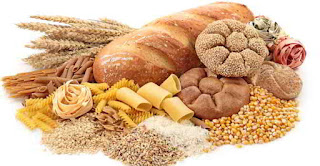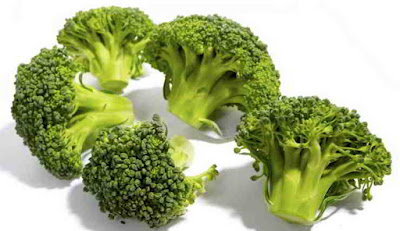Every day is greater the number of people looking for a balanced diet or macrobiotic. Largely renounce even completely, once the necessary meat.
If the proportion of carbohydrates is higher, they can be produced lack of vitamins B and intestinal disorders.
Fatty sausages, ham and chips are rejected or even banned in favor of fruits, salads and vegetables from organic farming. Also cereals are increasingly important, especially among vegetarians.
The macrobiotic diet to lose weight
Within this framework there are also diets. It also calls for ideological or philosophical aim not only to reduce weight but at the same time wish to convey a new sense of life: attention to food in modest appearance but really rich.
Many of the followers of these diets also matter in no small measure to
respect the animals, which also have the right to life ..., not to
mention the mass-breeding. These diets are currently fashionable.
Eating vegetarian is considered chic in many places.
The dieticians are happy about the change of the former consumers of
meat or lobster, but often the cause can not be left out of the
prevailing trends.
Macrobiotic diets examples
A system of great success in Spain is the macrobiotic diet. One way of vegetarian diet that is based on the principles of Zen Buddhism.
The founder of macrobiotics is the Japanese philosopher Oshawa , who died in 1966. He taught that man should feed on plant products so as to achieve maximum health. Therefore, the most important foods are cereals and vegetables; However, neither the meat or fish are prohibited.
Oshawa
eating habits divided into ten levels from - 3 to 7. At the bottom, the
- 3, it can take a twenty percent protein, preferably in the form of
fish. The road to a healthy body and soul leads through a gradual reduction of the protein level to level up.
Little by little it is also apart of vegetables and fruit until
finally, at the highest level of all, the 7 exclusively eat cereals. If you remain at this level they are guaranteed health, peace and ethics firmly.
The philosophy of macrobiotic diet includes foods division of yin and yang, ie, in the counterpoints of passive and active, male or female and the summer and winter.
The best ratio is obtained yin-yang with 5: 1 brown rice or cereals such as oats, millet, rye, wheat, etc. Oshawa recommended taking much salt and possibly drink little. Naturally, this recommendation is under severe criticism from nutritional medicine because it causes kidney disease.
There are other ideas of this Japanese philosophy that cause numerous
comments or indulgent smiles, as the statement that the body is able to
produce vitamin C itself or transform the sodium in oxygen.
The macrobiotic diet
leaves out many of the absurdities of the original macrobiotic theory
and principle thus becomes a way of globally balanced diet.
For a sufficient protein intake should eat fish once or twice a week,
or failing that whole foods, vegetables, legumes, soy products and
fruit.
Conversely, they are prohibited meat, poultry, eggs, milk and dairy products such as cheese for example.
The plant foods must come from organic farming. Artificial fertilizers and any type of pesticide are subject to a strong rejection.
How does the macrobiotic diet
With its low fat content and high percentage of carbohydrates, the macrobiotic diet, originally developed to prevent cancer, it is very suitable as a slimming diet.
The intake of vitamins and minerals is guaranteed, with plenty of fiber
probably absorbed water and digestive juices also carcinogens in the
gastrointestinal tract, which are eliminated in the rapid passage
through the gut, also due to the presence of that fiber .
With a daily intake of 1000 calorie, that is, with a deficit of 1,000 to 1,200 calories over a two week weight loss of two to six kilos is achieved according overweight.
They mobilize to this increasing extent of body fat deposits, a man of normal weight is about ten kilos and a woman midnight. Overweight people have proportionally larger reserves.
Although fat is not the fastest energy supplier, itself is arguably the most important. Much of our energy comes from it, resulting in nine calories per gram. In the macrobiotic diet they are mobilized mainly lipids and high degree. To compensate for the energy deficit of 1,200 calories must be freed around 140 g daily.
What can you eat?
- Calories: 1200-1200 daily.
- Nutrient ratio: 80% carbohydrates, 15% protein, 5% fat.
- Breakfast: Coffee or tea with little sugar. Wholegrain muesli.
- Food: Tofu with rice; meatballs with green vegetables; do braised fish fillet with potatoes.
- Dinner: millet porridge with fruit, trout fillet dish with salad , crab with cracker bread.
- Drinks: Fruit juice, vegetable juice, tea. No milk.
Components macrobiotic diets
In macrobiotic diets must consume up to fifty or sixty percent of biologically active cereals such as oats, rye, millet, buckwheat, wheat or corn.
Fresh vegetables should represent the 25 to 30 percent of food contributions, ten percent have to be legumes such as peas or beans and soybeans or other products, such as tofu.
Advantages of macrobiotic diets
Disadvantages diet
Since the available proteins are primarily of plant origin, deficiency states can occur if you do not eat a variety of fruits and vegetables;
this can be compensated by the absence of certain amino acids, since
the metabolism needs daily protein composition as valuable as possible,
that is, with all essential amino acids.
If you were to follow the macrobiotic diet
for more than two weeks of non-protein symptoms such as muscle
weakness, nervous disorders and metabolic disturbances may occur. Another disadvantage is that the supply of food can be monotonous. With a deficit of 1,000 calories per day is also great risk of spontaneously stop the diet. The fact that mandatory consumption of products obtained in organic farming is very reasonable, but makes purchases.
If you are going to go long the macrobiotic diet, which the same as the original macrobiotic philosopher Oshawa doctrine is regarded as a permanent way of eating is not guaranteed supply of a whole series of vital nutrients.
This refers to protein, vitamin B12, which appears only in foods of
animal origin as well as the minerals calcium, magnesium, iron and zinc,
whose absorption is prevented by the high content of dietary phytin.
Add to that the fact that the macrobiotic rejects vitamin preparations, but with a ratio of carbohydrates to eighty percent does not guarantee the contribution of vitamin B.
If the proportion of carbohydrates is higher, they can be produced lack of vitamins B and intestinal disorders.
Since proteins
, vitamins and minerals collaborate infinite ways, lack of a number of
nutrients and long term interruption of certain biochemical functions of
cells occurs.
This is a risk, especially for people who are not completely healthy or who are permanently subjected to high stress. Before starting the macrobiotic diet, these people should consult a doctor. This will control the nitrogen balance, indicating the protein needs of the organism.



























0 comments:
Post a Comment